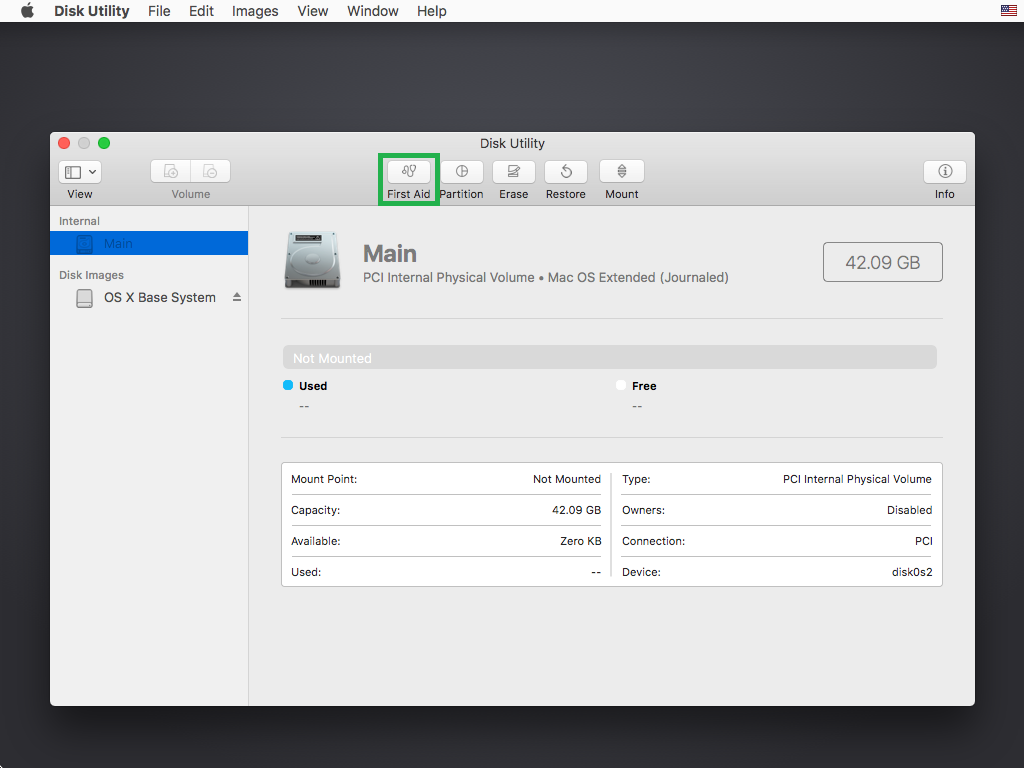

- Unmount disk mac single user mode install#
- Unmount disk mac single user mode manual#
- Unmount disk mac single user mode password#
Unmount disk mac single user mode manual#
I read the diskutil manual on Apple website, and I would like to perform a 'diskutil secureErase' to the entire disk, with 7 passages DoD wiping method in order to make irrecoverable all my data. The order of repair in this example was Macintosh HD - Data, then Macintosh HD, then Container disk4, then APPLE SSD. However, it starts in single user mode: CMD+S at the startup, with command line interface. This tells the Mac not to boot the normal way, but to boot into single user mode. However, if your Mac doesnt start up all the way, or you want to repair the disk your Mac starts up from, open Disk Utility from macOS Recovery: Apple silicon : Turn on your Mac and continue to press and hold the power button. As soon as you turn it on, begin holding Command S on the keyboard. In general, you can just open Disk Utility from the Utilities folder of your Applications folder. You can not erase and unmount the volume your home folder is on.
Unmount disk mac single user mode install#
Keep moving up the list, running First Aid for each volume on the disk, then each container on the disk, then finally the disk itself. MacOS has an alternate way to diagnose and repair your internal drive. a Pre-Boot volume for APFS install error Enter recovery mode: Restart your Mac and.
Unmount disk mac single user mode password#
If you're asked for a password to unlock the disk, enter your administrator password.Īfter Disk Utility is done checking the volume, select the next item above it in the sidebar, then run First Aid again.If the button is dimmed and you can't click it, skip this step for the disk, container, or volume you selected.If there is no Run button, click the Repair Disk button instead.In this example, the last volume on the disk is Macintosh HD - Data.Ĭlick Run to begin checking the selected volume for errors. This is why it is best to use a bootable macOS USB installer (or Internet Recovery Mode).For each disk that you're repairing, start by selecting the last volume on that disk, then click the First Aid button or tab. You cannot erase the drive that you have booted from. Unfortunately Apple's article neglects to show the best way to securely erase a hard drive (Apple's instructions are fine if you are using an Apple SSD due to how SSDs work differently than a hard drive), but if you follow my advice to first enable Filevault and letting the encryption process finish, then the rest of Apple's instructions for erasing and reinstalling macOS will be just fine since your data will have been destroyed when the Filevault encryption key is destroyed when using Disk Utility to erase the drive.Įdit: I should add that you must be booted from external media in order to erase the drive. Here is an Apple article on what you should do to prepare a Mac for sale or disposal: Earlier this week, we updated to 12.4, which is getting close to the end of this cycle.

(see screenshot below) 3 Click/tap on the Remove button. hoakley Macs, Technology Disk Utility can only check backup disks in Recovery It’s exactly six months since I last looked at the many problems plaguing Monterey’s Disk Utility. If I boot into Single User mode I cant run fsck without it throwing up an endless loop of errors to do with spacemanfreed.

(I can enter the Filevault password but the progress bar gets to 100 and then stalls. 2 Right click or press and hold on the drive (ex: 'F') you want to unmount, and click/tap on Change Drive Letter and Paths. Level 1 9 points Cant delete APFS volume.

It should also be possible to boot into Internet Recovery Mode using Command + Option + R, but Apple's information on this is a bit confusing for an older system only running macOS 10.10 and many people have posted issues when using local recovery mode to perform a clean install like this. 1 Press the Win + R keys to open Run, type diskmgmt.msc into Run, and click/tap on OK to open Disk Management. Your Mac in Single User Mode and Use FSCK Solution 3: Use a Third-Party Mac. Using the bootable macOS USB installer is best since you will be erasing the drive and will want to reinstall macOS for the new owner in order to show the laptop is functional. MacOS requires the EFI volume to be unmounted or it will complain about not. I then recommend creating a bootable macOS 10.11 El Capitan USB installer using these instructions (read them carefully as there are multiple steps to extract the installer to the Applications folder): The encryption process can take a day or more depending on the health of the drive. Since you have a hard drive I recommend enabling Filevault and let the Filevault encryption process complete. It appears you have just a single hard drive installed in your Mac.


 0 kommentar(er)
0 kommentar(er)
